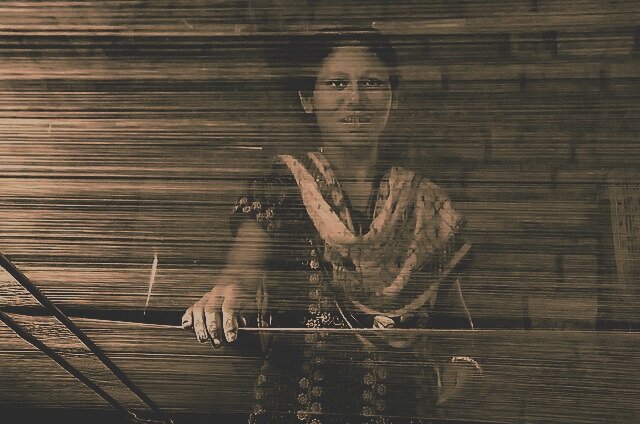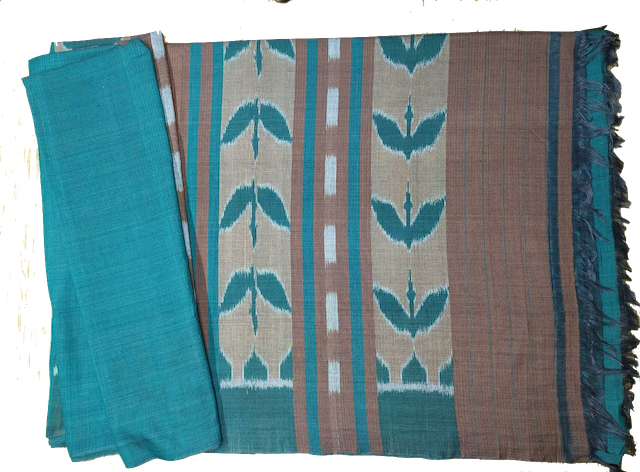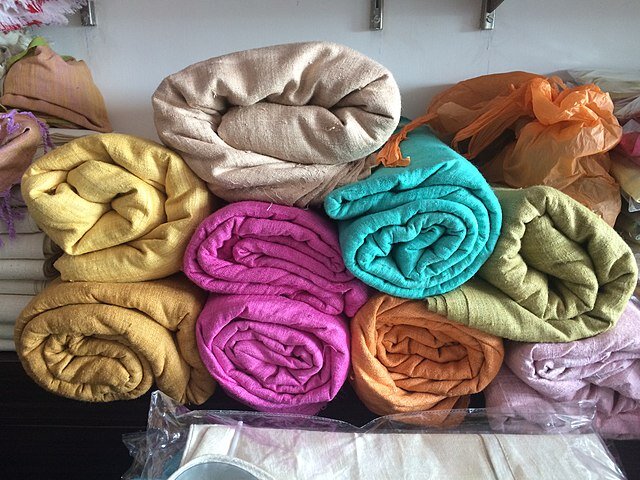Kamrup Fabrics



Are there fabrics worthy of a king’s treasure? And are there some qualities that make a fabric to be considered luxurious or of great value? The obvious answer may be “No”. Fabrics are such common items that these are used all over the world for clothes, sheets, blankets, and many other items. So, what can be special about them? But there indeed are fabrics from the Kamrup region, modern-day Assam state, of India which caught the attention of Chanakya as he was writing his manuscript - Arthashastra, almost two thousand years ago. Chanakya was the prime minister in the court of Maurya kingdom, the largest empire in SouthEast Asia in the 3rd century BCE. His manuscript, Arthshastra, is considered as the first book ever written on statecraft, economic policy and military strategy for a flourishing empire. While describing the materials that are worthy to be kept in a state’s treasure, Chanakya writes about the qualities of some fabrics
“That which is manufactured in the country, Vanga (vangaka) is a white and soft fabric (dukúla); that of Pándya manufacture (Paundraka) is black and as soft as the surface of a gem; and that which is the product of the country, Suvarnakudya, is as red as the sun, as soft as the surface of the gem, woven while the threads are very wet, and of uniform (chaturasra) or mixed texture (vyámisravána)”
Suvarnakudya, as mentioned in Arthshastra, is now known as Sonkuriha and is a village in Kamrup region of Western Assam. References to Assam as a silk-producing region are found as early as Ramayana where it is called the Kosha-karanam-bhumi ("the country of cocoon rearers"). The fabric is silk from Assam and it is as soft as the surface of the gem, is woven while the threads are very wet, and is worthy of a king’s treasure. This silk was so precious that it was used as gifts from one king to another. King Bhaskarvarman of Kamrup gifted silk items including a silk umbrella, sacks of woven silk and silk towels to King Harshavardhana as per the historical records from 7th century A.D. Assam silk was also traded heavily with regions in China and Tibet and it’s from the Assam region, the silk was introduced to rest of India.
Silk is basically a protein fiber that is secreted in the fluid state by larvae of a silkworm and its exposure to air hardens it in the form of a thread. There are several varieties of silk based on the silkworm and the host plant the worm feeds on. The method of production can create more varieties and fabrication techniques can create even more. So, a combination of Silkworm, Host Plant, Silk thread production method, and the fabrication process creates quite a few varieties of fabric for various uses. Silk production techniques originated in China as early as 5000 years ago according to Confucian texts and from there it spread to the Assam region in India. But there is one huge problem with Silk that makes it a controversial fabric. So much so that many Buddhist and Jain monks refuse to wear it. The controversy is about the production method. During silk production, the silkworms feed on a host plant and as they grow, they spin their silken cocoons. The cocoon is a continuous filament comprising of fibrous protein that is secreted by the silkworm. Silkworm also secretes a. natural gum called sericin that binds the fiber together. These cocoons are created so that the worms can stay within till they are ready to hatch and fly as moths. But to produce silk, these cocoons are placed in hot water as soon as these are formed. The hot water loosens the sericin gum so that the fiber is ready to be reeled off from the cocoon. But this process also kills the worm, making silk production an inhumane practice. And that’s the reason why Buddhist and Jain monks and a growing number of environmentally conscious folks around the globe resist the use of silk fabrics. But there is a way to produce silk in a humane way without killing off the worm.
Silk Cucoons are boiled and silk. is extracted. But this process also kills the worm. Image Courtesy @jamespoo at Twenty20
Ahimsa or non-violent silk used a process where silkworm is allowed to escape before silk extraction. Image Courtesy @isuperlady at Twenty20
Many artisans in the Kamrup region in India use such a production method where silkworms are allowed to stay in the cocoons till they hatch and are able to fly away as moths. The yield of silk fiber using this humane production method is only one-sixth compared to the method where worms are killed, so this makes the silk produced by artisans more expensive. But it is not enough to just keep the worms longer in cucoon. The moth should be able to survive after it is hatched. This is a problem with the most common variety of silkworm, called Mulberry silkworm, so called because it feeds on the leaves of the mulberry tree. While it produces a high-quality smooth silk fiber, but this is a domesticated breed of moth and even if it is allowed to hatch, the adult moth can’t fly too far because its body is too heavy for its wings. To give silkworms a true surviving chance, the Assam silk artisans use a different silkworm variety called Eri-Silk. Eri silkworm feeds on the Castor plants and its adult moth is capable of flying and surviving after it has hatched. This is truly a humane way of producing silk where silkworm is not killed in the production process and is able to. survive naturally after it is hatched. This makes Eri-silk a very special silk. This silk also has natural wool like properties. It stays warm in the winter and cool in summer and is perfect for stoles, shawls, jackets, and other such uses. While the Eri-silk is very special, but the artisans are in poor shape because. they are finding it hard to compete against the modern production methods and many are giving up their age old traditions.
Weaving os Silk. Fabrics. on a wooden handloom mill. Image Courtesy @jamespoo at Twenty20
A woman using traditional techniques to weave a fabric. Image Courtesy. @lmallo via Twenty20
Spinning and weaving of yarns is an important part of the Assamese culture. In addition to silk, cotton, another non-violent crop, is also used for weaving. Many folktales and songs make references to weaving. A beautiful folk song by the Rabhas tribe in Assam captures the essence of weaving so beautifully:
I see only flowers covering branches of trees, all the world around, I see only you,
O my darling, for whom are you weaving?
O dear, I am not weaving for anyone else,
it is in expectation of you that I am teasing cotton and spinning,
it is with desire in my body for you that I have taken up the weaving of a flowered chaddar.
If you are sporting a stole made from Eri-Silk or the soft cotton weaved by artisans in Kamrup region, you can enjoy the luxurious feel and warmth of the fabric against your body, you know that it was produced in a non-violent manner without hurting anyone, and you also know that you are supporting the artisans who are struggling to compete against lower-cost production methods where silkworms are violently killed. But with your support, these artisans from the Kamrup region in Assam are keeping a tradition alive that is worth preserving.





